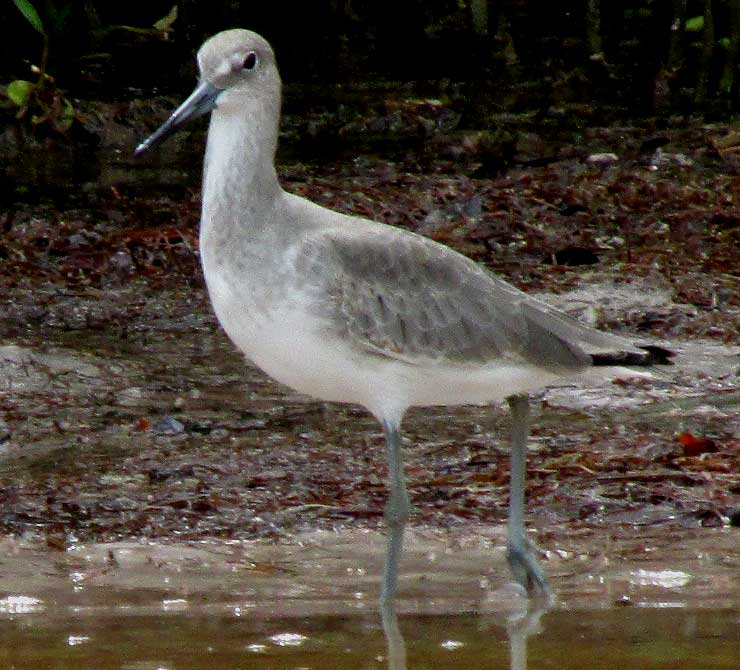Excerpts from Jim Conrad's
Naturalist Newsletter

from the October 26, 2014 Newsletter issued from Río Lagartos, on the Yucatan Peninsula's northern coast (~N21.60°, ~W88.16°), Yucatán state, MÉXICO
WILLET
A Willet, TRINGA SEMIPALMATA stalking along the muddy edges of the estuary at Río Lagartos is shown above.
Willets in winter plumage such as this, at least when they're not opening their wings displaying the broad, white bands running across their black inner wings, can be mistaken for the closely related Greater Yellowlegs in their winter plumage. However, yellowleg beaks are relatively longer and more slender, plus their beaks are all black, while you can see that our Willet's beak is two-toned -- blacker toward the tip.
During migration and the summer breeding season Willets turn up in most of western North America and along the coast in the East. In the Yucatan they're non-breeding winter visitors along the coast.
In the winter Willets occupy many wetland habitats, including freshwater and saltwater marshes, mudflats, and estuaries like ours. Mainly they eat invertebrates, including insects, aquatic worms, and mollusks, and even small fish. Our bird was probing the mud with its bill while walking along the water's edge.